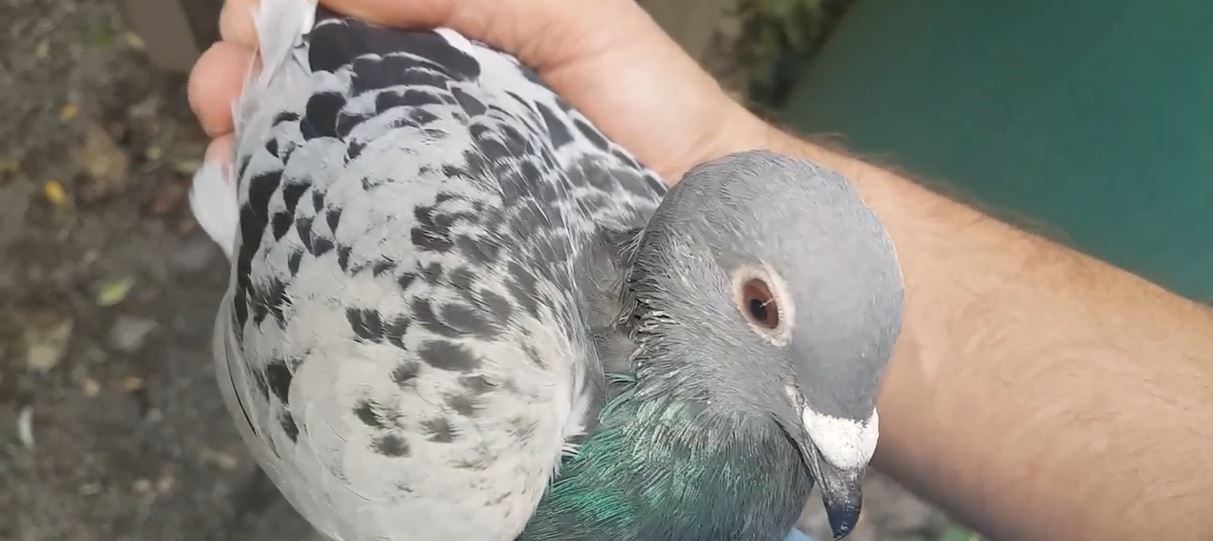About Pigeons: Appearance, Biology, Life Cycle, Habitat, Diet, And Behavior

Pigeons are known for being highly intelligent animals, but they can still pose a problem when they are one your property and you don't want them there. Pigeons have actually lived close to humans for thousands of years and just a few centuries ago, people would use pigeon droppings as fertilizer. Today, most people use the word pigeon and dove interchangeably and some languages even have a single word for both names.
Appearance
The average pigeon will be 28 to 40 centimeters long and 250 to 550 grams. You will find a large number of variations in the appearance of pigeons since these animals have mutated throughout the years. It is especially common to notice these mutations among captive pigeons, which has led to numerous plumage colors. Pigeons have a stout body with a slender and short bill and short neck.
Biology And Life Cycle
They typically live 10 to 15 years and mate for life. Some experts estimate that up to 35 percent of a given pigeon population will die each year because of predators and natural causes. Common predators include birds of prey, rats, and cats. The oldest pigeon on record, however, was 33 years old.
Pigeons frequently raise two chicks simultaneously. During the rearing process, both the male and female care for their children. They will work together to incubate the eggs and both produce pigeon milk which they then feed to their chicks. This “milk” is also known as “crop milk” and is regurgitated from the mouth of the parent. Parents will collect twigs and sticks to build a flimsy nest for their pigeon and most clutches will have two white eggs. The parents will incubate these for 18 or 19 days. In environments with a great deal of food, pigeons may produce 8 clutches annually, with fewer in other areas.
Chicks will double their birth weight in a single day without an issue. They open their eyes about four days after birth and can leave their nest at around 2 months. A baby pigeon reaches maturity between 6 and 10 months of age, at which point they are able to reproduce.
Habitat
Traditionally, pigeons lived mostly in coastal areas, but today you can find them in urban settings as well. They have adapted to the urban environment over time and you can find them nearly anywhere in the world, with the exception of the high Arctic, Antarctica, and the Sahara Desert.
These birds tend to live in larger groups. Most of the time, you will see them in a flock of 20 to 30 birds. In urban areas, they will roost on man-made spots such as window ledges or tall buildings. Pigeons also thrive in suburban and rural settings where they find other tall man-made structures, such as open barns, abandoned homes, and the area under bridges.
In the wild, these birds will usually live either close to or on a large, rocky cliff. They will build a nest along the cliff face which makes it much harder for predators to get to them. Pigeons can also live in caves close to the opening. It is not uncommon for mating pigeons to build their nest in the same location every year.
Diet
Pigeons are omnivores, eating both plants and animals. They tend to enjoy fruits like berries, seeds, shoots, green leaves, and other types of soft plant material. They will also eat spiders and other insects as well as slugs, snails, and small lizards, earning them their status as an omnivore. In urban environments, pigeons will eat scraps from the trash as well as fallen food and pet food that is left outside. They have also been known to eat spilled grains and garden waste in more rural areas.
You will notice that when feeding, pigeons avoid confrontation. This means that they tend to stay in open, large areas, like parks, playgrounds, landfills, or town squares. This increases their visibility so they have enough time to escape if a predator comes.
Behavior
Scientists know that pigeons are very intelligent animals. They have recognized themselves in mirrors, something only a very small number of animals can do. They have also been taught to recognize letters of the alphabet and various people.
Pigeons are also excellent navigators. They have an internal magnetic compass that helps them find their way and they also use the sun to help them get around. A scientific study found that they even use landmarks to help them remember their paths. They can also hear very well, detecting sounds at frequencies humans cannot. This lets them hear incoming volcanoes or storms.
Pigeons are able to fly to an altitude of 6,000 feet or even higher. The fastest speed recorded for a pigeon was 92.5 mph, but their average speed is 77.6. Most of the time, pigeons will produce a call that is a gentle cooing sound with a loud clattering when an entire flock takes off. During breeding, however, pigeons will have a huskier call.
Read the How to get rid of birds page for helpful information and to learn more about About Pigeons: Appearance, Biology, Life Cycle, Habitat, Diet, And Behavior

